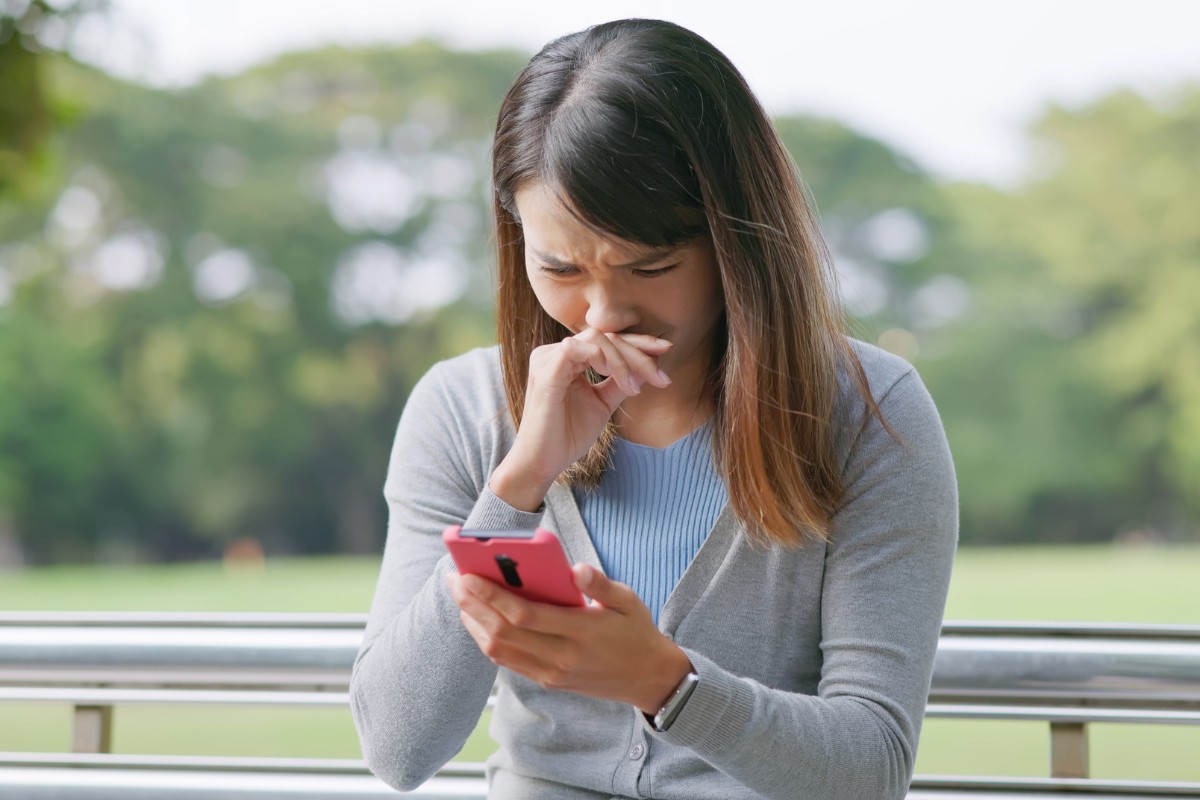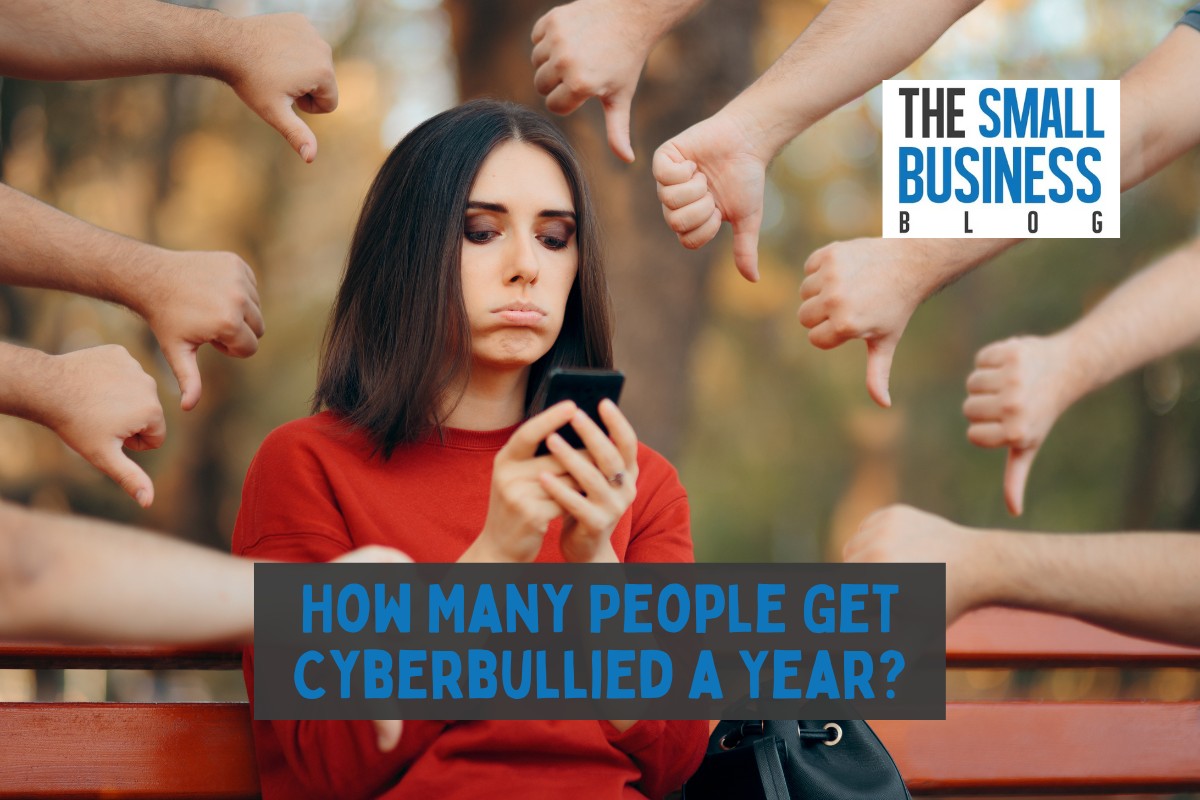If anything is at pandemic-level today, it’s cyberbullying.
While cyberbully attacks fluctuate, the growth in this horrid behavior is astounding.
Today, we will answer the question, How Many People Get Cyberbullied a Year?
We will discuss who gets cyberbullied the most and where.
We will address cyberbullying among today’s youth as well as among the elderly.
We have done research to uncover the most recent data about cyberbullying all over the globe.
Not all countries report their cyberbullying data to the world, but we will share what we have found.
Sadly, the “trend” in cyberbullying is that it continues to rise despite certain efforts to reduce it.
Cyberbullies are relentless and will find ways to threaten, scare, or otherwise induce abuse online whenever and wherever they can.
Let’s find out what’s going on in this realm and what we can do to mitigate the problem.
Post Contents
- 1 Key Statistics
- 2 How Many People Get Cyberbullied a Year?
- 2.1 1. Cyberbullying impacts 46% of teenagers in the United States.
- 2.2 2. Between 2020 and 2021, 41% of American adults endured forms of cyberbullying.
- 2.3 3. 52% of adults aged 18 to 23 experience harassment.
- 2.4 4. 51% of adults aged 24 to 39 experience harassment.
- 2.5 5. Harassment as cyberbullying impacts people of all ages.
- 2.6 6. Some countries have laws against cyberbullying.
- 2.7 7. 91% of the populations of Sweden and Italy are aware of cyberbullying.
- 2.8 8. 50% of teenagers believe criminal charges should be brought on cyberbullies.
- 2.9 9. 75% of people targeted by cyberbullies were harassed on Facebook.
- 2.10 10. Globally, 76% of adults think that anti-cyberbullying efforts aren’t working.
- 3 FAQs
- 4 Global cyberbullying and harassment resources:
- 5 Conclusion
Key Statistics
- Cyberbullying impacts 46% of teenagers in the United States.
- Between 2020 and 2021, 41% of American adults endured forms of cyberbullying.
- Some countries have laws against cyberbullying.
- 91% of the populations of Sweden and Italy are aware of cyberbullying.
- 50% of teenagers believe criminal charges should be brought on cyberbullies.
- 75% of people targeted by cyberbullies were harassed on Facebook.
- Globally, 76% of adults think that anti-cyberbullying efforts aren’t working.
How Many People Get Cyberbullied a Year?
1. Cyberbullying impacts 46% of teenagers in the United States.

Nearly half of all American teens have experienced some form of cyberbullying in their lifetimes, according to data.
Moreover, among high school students, 23% reported some form of cyberbullying over the past 30 days in one study.
Furthermore, 12% of American parents claim their child is cyberbullied regularly.
(Cloudwards, Exploding Topics)
2. Between 2020 and 2021, 41% of American adults endured forms of cyberbullying.
A 2017 Pew Research Center survey revealed that 41% of American adults have experienced some type of cyberbullying.
Some cyberbullying instances were worse than others, but included such things as harassment, stalking, physical threats, sexual harassment, etc.
(Cloudwards)
3. 52% of adults aged 18 to 23 experience harassment.
Harassment is one of the forms of cyberbullying experienced by people of all ages.
In fact, 52% of adults experience harassment, according to statistics.
(Online Hate and Harassment)
4. 51% of adults aged 24 to 39 experience harassment.
The second age group that experiences cyberbullying in the form of harassment consists of those aged 24 to 39.
(Online Hate and Harassment)
5. Harassment as cyberbullying impacts people of all ages.

Cyber harassment also impacts people aged 40 to 55 at 38%, 56 to 74 at 27%, and people 75 and older at 14%.
(Online Hate and Harassment)
6. Some countries have laws against cyberbullying.
While cyberbullying has no federal laws against cyberbullying, some states or municipalities may have some laws in place.
Globally, countries like Japan, Canada, and New Zealand do have cyberbullying laws and some have laws that can apply to it like laws against stalking or sexual harassment (this is illegal in the U.S.).
It can also apply to any form of child abuse in some countries.
Therefore, we do see some criminal sanctions for cyberbullies.
(Cloudwards)
7. 91% of the populations of Sweden and Italy are aware of cyberbullying.
A 2023 Statista chart shows that awareness of cyberbullying is highest in Sweden and Italy at 91% for each country.
Chile is next with 89% cyberbullying awareness and South Africa follows at 88%.
The United States has an 85% share of those aware of cyberbullying along with countries like Malaysia, Serbia, and Canada also at 85%.
(Statista)
8. 50% of teenagers believe criminal charges should be brought on cyberbullies.
Most teenagers believe there should be monitoring and criminal charges for cyberbullying.
In fact 50% believe that criminal charges would help a lot to reduce cyberbullying on social media.
Another 32% think it would help a little and 17% think it wouldn’t help at all.
(Pew Research Center)
9. 75% of people targeted by cyberbullies were harassed on Facebook.

Unfortunately, Facebook is the most common social platform for cyberbullying.
So, not only is Facebook known as the most popular social media app/platform, it’s also a place where teens and adults are targeted by cyberbullies.
The other 25% of those cyberbullied say they were targeted on Instagram, Twitter, Snapchat, YouTube, and on other social media outlets.
(Exploding Topics)
10. Globally, 76% of adults think that anti-cyberbullying efforts aren’t working.
According to a global survey of adults in regard to cyberbullying, 76% believe that the current anti-cyberbullying efforts are ineffective.
In Japan alone, this percentage accounted for 89% of adults who think not enough is being done about cyberbullying.
Even though Facebook can now detect two-thirds of cyberbullying content before users report it, we are still failing victims of this behavior.
(Exploding Topics)
FAQs
What are some types of cyberbullying?
There are many ways a cyberbully can “attack” a person.
Here are some of those ways:
1. Harassment
2. Cyberstalking
3. Exclusion
4. Doxing
5. Outing
6. Fraping
7. Trolling
8. Dissing
9. Flaming
10. Impersonation
11. Trickery
12. Denigration
13. Catfishing
14. Fake Profiles
Where does cyberbullying happen?
Cyberbullying, as the name implies, occurs online, but it can carry over into real life.
Here are some examples of how cyberbullies carry out their poor behavior.
1. Mean emails or texts
2. Hurtful or threatening social media posts, comments, or messages
3. Spreading rumors or false information online
4. Sharing embarrassing information
5. Posting or sharing private messages
6. Impersonating a person to harm their reputation
7. Exclusion of a person in an online group
8. Creating hate websites or groups against a person or persons
How does cyberbullying impact the victim?
Cyberbullying is associated with depression in teenagers.
In fact, some consider, attempt, or complete suicide due to cyberbullying.
People who are being bullied (online or offline) may exhibit these signs:
1. Withdrawal from family and friends
2. Decline in academics
3. Missing school or feeling uncomfortable going to school
4. Claiming illness often to avoid school
5. Not wanting to go online at all
Global cyberbullying and harassment resources:
United States:
- Stop Bullying Now Hotline: 1-800-273-8255
United Kingdom:
- Childline: 0800 1111
- NSPCC Helpline: 0808 800 5000
- Young Minds 0808 802 5544
Canada:
- Kids Help Phone: 800-668-6868
Australia:
- Kids Helpline: 1-800 55 1800
It’s wise for parents and youth in all countries to be aware of the laws and helplines regarding cyberbullying and harassment.
Conclusion
These statistics show that cyberbullying isn’t a victimless act.
It’s not always kids being kids or people playing harmless pranks on others.
In fact, depending on the form of cyberbullying, it may be a crime.
Some countries, territories, states, cities, or other municipalities all over the globe do have some kind of laws about cyberbullying.
What can be done to mitigate cyberbullying?
According to Delete Cyberbullying, here are some things we can all do to reduce cyberbullying:
- Utilize privacy settings on social media
- Before you post anything online think about how it will affect others
- Keep your personal data personal and private
- Educate yourself and others about cyberbullying
- Speak out if you’re being cyberbullied or if you know someone who is being cyberbullied
With data like over three-quarters of global adults thinking the existing efforts to prevent cyberbullying aren’t working, we all need to do whatever is within our own power (legally) to mitigate it in our own homes.
We can utilize things like privacy settings on social media, especially on Facebook, block people who are trying to harass us, and report instances against ourselves or intervene on the behalf of other victims.
We hope you are more enlightened about cyberbullying and how it impacts society.
We also hope we will all do our part to reduce and eliminate how many people get cyberbullied a year.






























